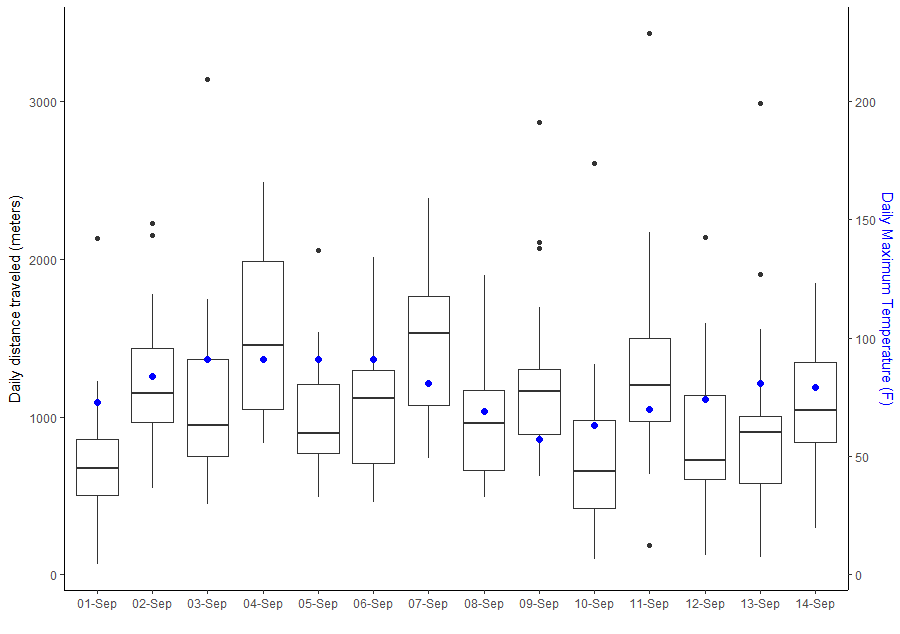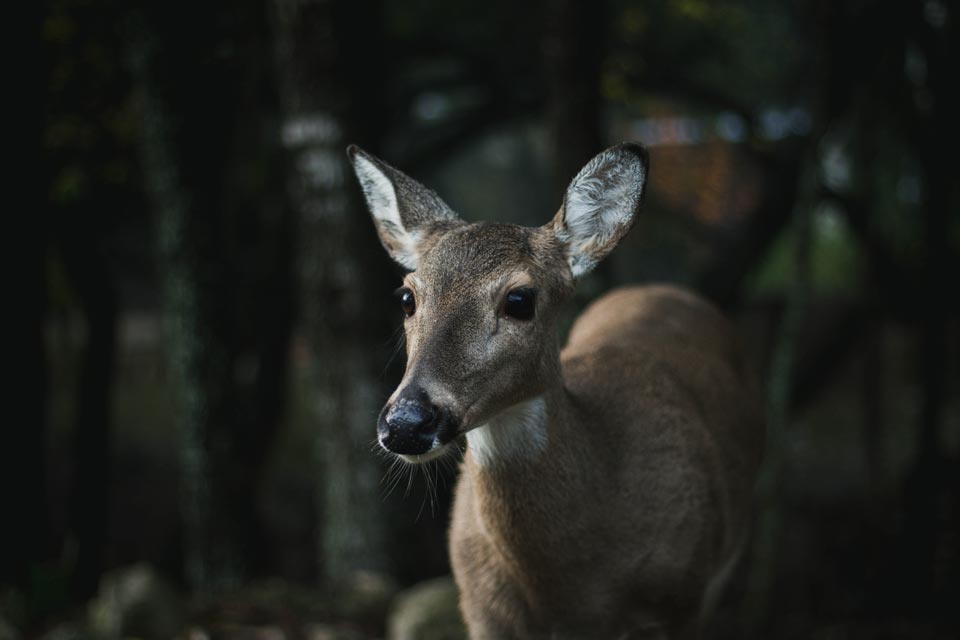Labor Day is the unofficial end of summer. School has begun and the carefree summer mentality is stowed for another year. This year the temperature on Labor Day in State College was 91 degrees F. That doesn’t feel like fall. I’m trying to think about hunting seasons while I’m donning shorts and clamoring for a cool iced tea in the shade!
How do deer react to these kinds of temperatures? Are they looking for that shade tree too?
We’ve looked at how temperatures affect the rut. They don’t. And how hot dry summer conditions might alter movements. Nothing.
But the question of weather and its effect on deer movements persists. And if there is one thing we have with the Deer-Forest Study, it’s data. So we’ll look at it again.
Weather in the first 2 weeks of September was interesting. The daily high ranged from 57-91 degrees F, rainfall ranged from 0-2”, and wind ranged from 4-25 mph.
I first looked at how temperature may have affected daily movements. The graph below shows a boxplot of movements (the box contains values that most deer moved daily, the horizontal line is the mean). You can see there is a lot of variation (the length of the “whiskers” of the boxplots along with the “outlier” points). The daily maximum temperature is plotted in blue.

For every 1 degree F warmer, deer moved more – on average about 14 meters. That’s about a 750 meter (about a half mile) difference between the coldest day (57 F) and the hottest (91 F)!
What about rain fall you ask? I don’t think it explains much…

And neither does wind…

Before you get too excited about how deer appear to move more when it’s hot, keep in mind that daily temperature only explains about 3% of the variability in the data. So planning your hunts around the thermometer likely won’t contribute much to your success or failure.
Why might deer move more on hot days? I don’t know. You’ll have to ask a deer.
-Duane Diefenbach
If you would like to receive email alerts of new blog posts, subscribe here.
And Follow us on Twitter @WTDresearch
